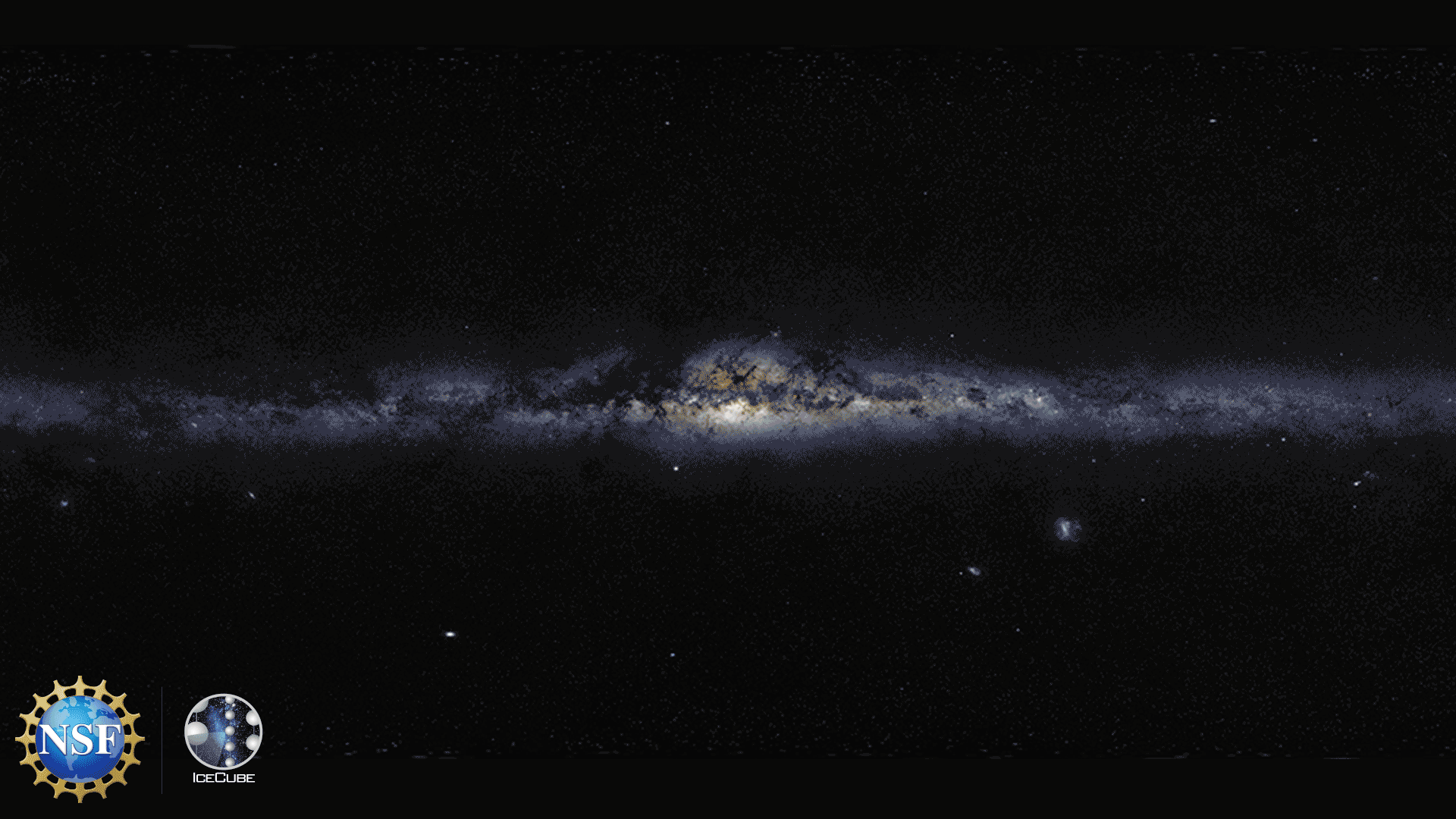Drexel Physicists Produce New Images of Milky Way Galaxy

- Drexel Selects New, World-Class Life Sciences Building at 3201 Cuthbert Street for Medical Research Operations
- Breakthrough on Gene Therapy for Hereditary Spastic Paraplegia
- Drexel Environmental Collaboratory Releases Cross-Sector Findings on Severe Weather Recovery Challenges
- Drexel Launches the Manuel Stamatakis Center for Alternative Investments at the LeBow College of Business

The Milky Way Galaxy is made visible through emissions of optical frequencies of electromagnetic radiation – fleeting to the naked eye before – this magical phenomenon has now been captured in a new “image” of the galaxy, making it more accessible to view than ever before. Physics researchers from Drexel University at the IceCube Neutrino Observatory led the production of the unique image by determining the galactic origin of thousands of neutrinos (tiny, astronomical “ghost particles”) which typically pass through Earth undetected despite existing in vast quantities. The makeup of the first-of-its-kind neutrino-based image of the Milky Way Galaxy uses particles of matter instead of the usual electromagnetic energy.
The results were achieved by a collaboration of researchers led by Naoko Kurahashi Neilson, PhD, an associate professor of Physics in Drexel’s College of Arts and Sciences, using the United States National Science Foundation-supported IceCube Neutrino Observatory at NSF's Amundsen–Scott South Pole Station in Antarctica and published in Science.
The mammoth IceCube Neutrino Observatory detects the nearly imperceptible particles – high-energy neutrinos – from space by using thousands of light sensors in a network buried deep within a cubic kilometer of Antarctic ice through to the floor of the Antarctic Ocean, 2,450 meters deep or comparable to a stack of five Empire State Buildings.
With an NSF Faculty Early Career Development grant, Kurahashi Neilson and Michael Richman, then a Drexel post-doctoral researcher, proposed an innovative computational analysis – using new machine learning techniques and developing better methods to filter data – to generate the image.
“We use neutrinos to study the universe, in a way that we can’t do by studying light,” said Kurahashi Neilson. “In the beginning of this research, we expected to see a completely different universe using neutrinos – like using night vision goggles to see in the dark.”
In the Milky Way Galaxy, cosmic rays (high-energy protons and heavier nuclei) interact with galactic gas and dust to produce both gamma rays and neutrinos. Kurahashi Neilson and colleagues noted that they expected the Milky Way to be a source of high-energy neutrinos because of the observation of gamma rays from the galactic plane, the plane on which most of a galaxy’s mass exists.
"The community has long understood that our own galaxy is an essentially guaranteed source of high energy neutrinos,” said Richman. “In my time at Drexel, my focus was on developing methods that could allow us to see those neutrinos without being blinded by particles produced in Earth's atmosphere. Since then, the team has enhanced every aspect of the approach, leading to the compelling result we can finally share today."
The IceCube Neutrino Observatory detects the interactions – a faint pattern of light – of the neutrinos beneath the ice. But the challenge is determining where the neutrinos come from. Some patterns are highly directional and can point to a particular area of the sky, which allows researchers to determine the neutrinos’ source. Other interactions are harder to decipher because they produce cascading fuzzy “balls of light" in the clear ice.
Steve Sclafani, a former Drexel PhD student, developed a machine learning algorithm that compared the relative position, size and energy of more than 60,000 such neutrino-generated cascades of light recorded by IceCube over 10 years, 30 times as many events as the selection used in a previous analysis of the galactic plane using cascade events.
After testing and verifying the algorithm, the research team input real IceCube-provided data from neutrinos determined to be from the southern sky – where they expect most of the neutrino emissions from the galactic plane to be near the center of the Milky Way Galaxy. The identified neutrinos were then compared to previously published “prediction maps” of locations in the sky where neutrinos from Milky Way Galaxy are expected to shine, theoretically produced in places where observed gamma rays were thought to be the by-products of collisions between cosmic rays and interstellar gas.
Using the real IceCube data in the algorithm produced an image showing bright spots corresponding to locations in the Milky Way.

"We're the first ones to see our galaxy in anything other than light," said Kurahashi Neilson, when she and Sclafani first examined the image.
“A neutrino counterpart has now been measured, thus confirming what we know about our galaxy and cosmic ray sources,” said Sclafani, now a post-doctoral researcher at University of Maryland.
The unique, neutrino-based image of the Milky Way is the latest astronomical discovery, but Kurahashi Neilson predicts this process will have applications that help reveal other unknown aspects of the universe.
“Observing our own galaxy for the first time, using particles instead of light is a huge step,” said Kurahashi Neilson. “As neutrino astronomy evolves, we will get a new lens with which to observe the universe.”
In This Article
Contact
Drexel News is produced by
University Marketing and Communications.